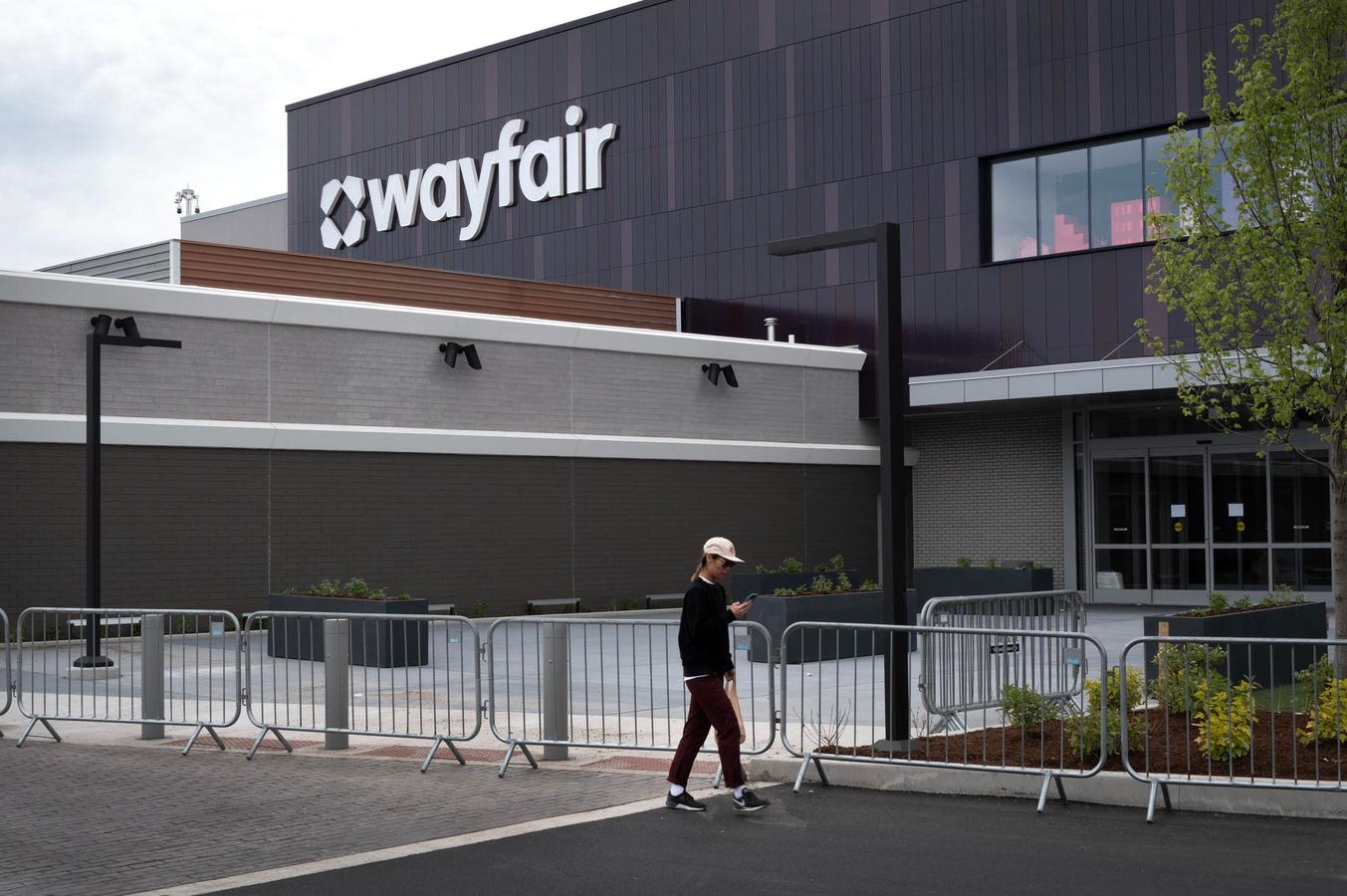A retailer that made its name online as an e-commerce-only company, Wayfair just made an entry into physical retail with a mega-store that could be on the cusp of a couple new retail trends, or at the very least tell us something about what works for furniture and home décor shoppers.
Last week Wayfair opened a 150,000 square foot, two-story brick-and-mortar store in Wilmette, Illinois, the first physical store bearing the name of its main banner. In addition to a broad product assortment, the location features design services and home improvement advice available from in-store experts, a mural from a local artist and a 90-seat restaurant called The Porch featuring inside and patio dining.
Wayfair is not envisioning the location as a one-off. A representative of Wayfair told Forbes in an email that the retailer expects to have a portfolio of large-format stores over time, and will be testing and learning from the first location to refine the offering and strategy.
While Wayfair has dipped its toe into physical retail before—with a single, small-format, main-brand mall store that opened in 2019 and closed in late-2020, and a handful of currently operating and expanding small-format retail chains under its specialty brand banners like AllModern and Birch Lane—a big box bearing the Wayfair name may be a bit of a surprising development given the type of store expansions one has come to expect, especially from e-commerce companies going physical, but big boxes from such companies are something we may well see more of.
Why Get Physical?
Wayfair is not the first e-commerce success to move into physical retail; in fact in the past few years the whole notion of online-only brands underwent a bit of a paradigm shift. In 2019, when Warby Parker and Allbirds both opened physical stores in the ramp-up to their IPOs, it was becoming clear that physical retail had advantages for customer acquisition impossible to replicate online, especially as online advertising was growing more difficult with Apple phasing out third-party cookies.
While important, launching physical stores has not proven to be a magic bullet for online brands in all cases—Allbirds has notoriously floundered in recent years, most recently having to close many of the stores it opened and facing such a precipitous stock drop that it’s facing delisting. Retail fundamentals, desirable product and so on remain, of course, central to a brand succeeding in storefronts real or virtual. But a physical location reliably boosts companies where the successful characteristics otherwise stack up. Studies have found a “halo effect” from physical retail, in the sense that retailers with a physical presence experience increased online sales and increased online basket sizes in the area where they have the physical presence. The impact is even greater for direct-to-consumer companies, and the younger customer cohort—despite its reputation for being a “digital only” generation—actually does more in-store shopping.
The boost, whether it can be chalked up to increased brand recognition, customers following showrooming with online purchases, store experience as a driver of sales and loyalty, improved chances for drop-in foot traffic or some other phenomenon, provides a solid rationale for even the most successful e-commerce-only companies launching physical locations. So a brick-and-mortar Wayfair store makes sense— a more interesting question may be why Wayfair is going so big.
Is The Small Store Trend Set To Shrink?
Another big story in the past few years has been big retailers making inroads into cities with their small-format store concepts. Instead of trying to make more suburban-style big boxes with a ton of floor space and huge selections fit in urban locations, we saw retailers like Target
Target
But not all big boxes have succeeded going small and stripped-down. IKEA’s mixed results attempting to bring their notoriously big and labyrinthine store experience into a smaller, more city-friendly package paints a more complicated picture of why a small-store concept sinks or swims. Late last year came reports that IKEA’s urban stores were being redesigned. Customers did not like the original layout of the urban concept, which was meant to provide a tidy, quick shopping experience for a time-pressed urban customer. What customers wanted out of an IKEA, big or small, was a store that felt like an IKEA, complete with a layout that encourages wandering.
The implication is either that IKEA’s brand image is inextricable from its big box experience—IKEA shoppers look for IKEA-like stores—or that there is something that the IKEA big box got right a long time ago that just works for the category, wherever the store is located.
Is Retail Set To Breathe New Life Into Big Boxes?
The fact that the new Wayfair store as described has some IKEA-like qualities, such as comprehensive product selections and an in-store restaurant, (though it is half the size of the Swedish chain’s average big box) seems to reflect the latter insight; big box stores with a lot to do in them are the kind of stores furniture shoppers like. The fact that the new Wayfair is a suburban store rather than a trendy urban shop may reflect a bet on a population trend.
A recent story in US Today discussing the latest census data says that a move away from major metro areas and toward affordable smaller cities and small towns, which began during the COVID-19 pandemic and slowed in 2022, has picked backed up.
Even before the disruption of COVID-19, some major retailers were anticipating a new wave, and maybe a new kind, of suburban shoppers. Back in 2018 Walmart
Walmart
So with its new concept Wayfair seems to be planning to capitalize on a population influx into small towns, and to create a shopping experience that has succeeded with one of the longest standing and most successful players in the category. Moves like this may foreshadow a new kind of lively big box shopping (that IKEA no doubt helped to pioneer) that’s more enjoyable, digital and geared toward entertaining customers than the stolid, stereotypical big box experience of recent years.
And it makes sense for a move from an online-only retailer as well; a new suburban location will not impact its existing relationships Wayfair’s big city fans of the brand, who presumably keep coming back because they are happy with the online shopping experience. It might even provide a faster path to order fulfillment.
Read the full article here





